Some fish aren’t just big—they’re legendary.
We’re talking jaws the size of trash can lids, scales that shimmer like armor, and enough muscle to tow a boat sideways. These aren’t the ones that got away—they’re the ones you’ll never forget.
Across the rivers, lakes, and coastal waters of the U.S., monster fish are lurking. Some are ancient beasts that look like they swam straight out of a dinosaur documentary. Others are just plain weird—and way bigger than you’d ever expect.
And one of them? It might be a lot bigger than you’ve been told.
If you think you’ve seen a “big catch,” buckle up. These 12 giant fish rule the waters—and one of them might just blow your mind.
Goliath Grouper
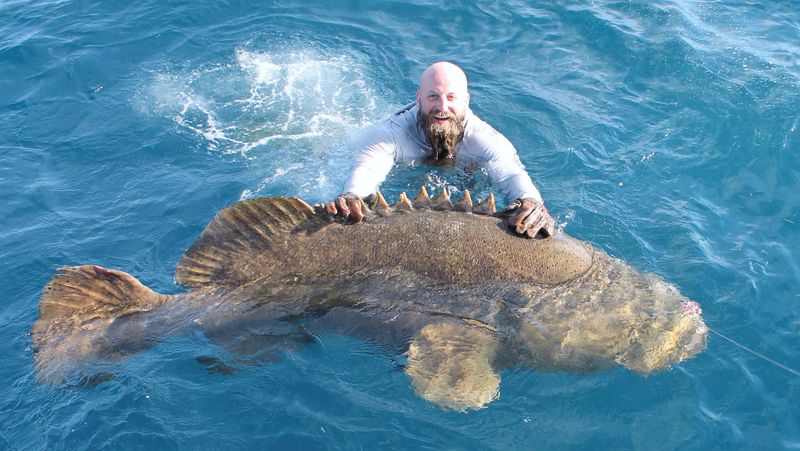
The Goliath Grouper, a true heavyweight of the sea, commands attention with its enormous size and striking appearance. Found primarily in Florida waters, this colossal fish can grow up to 800 pounds, becoming a living legend among anglers. Its wide mouth and distinctive markings make it easy to recognize.
In the past, overfishing posed a significant threat to this species, but conservation efforts have allowed their numbers to rebound. Anglers now cherish the opportunity to encounter this gentle giant, making it a symbol of nature’s resilience and the thrill of the catch.
White Sturgeon
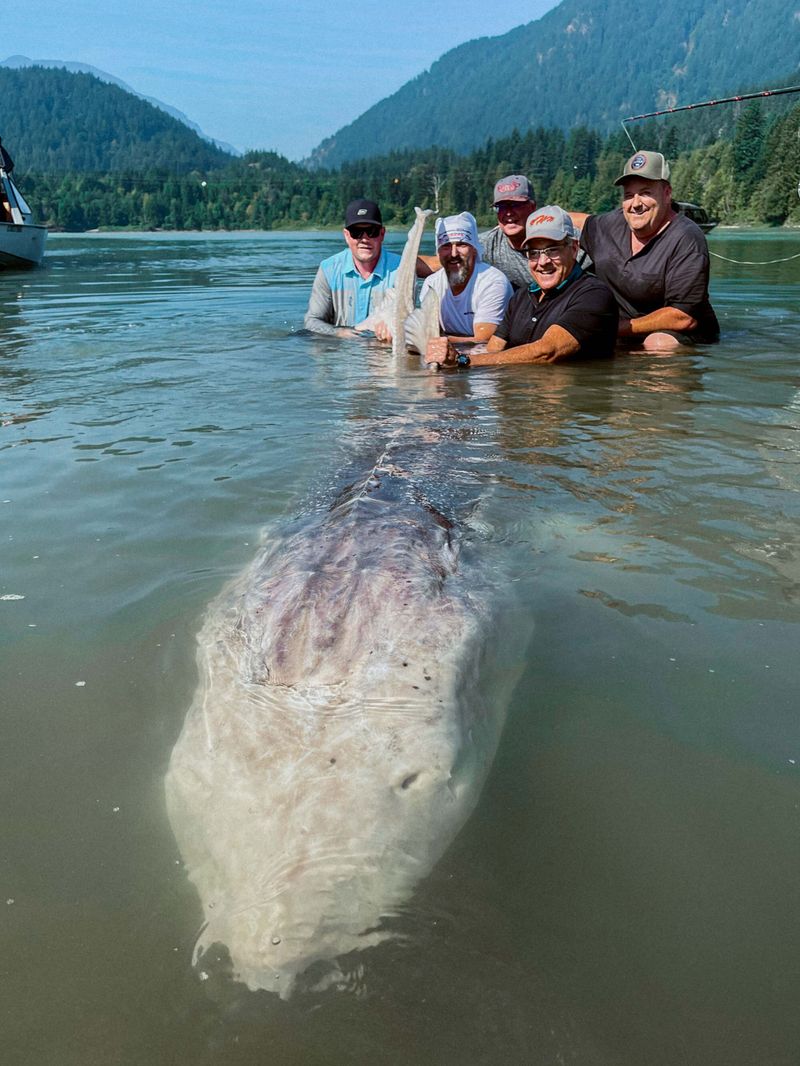
Imagine a fish that predates the dinosaurs, and you’ll find the White Sturgeon. Native to America’s West Coast, this ancient creature can grow up to 20 feet long and weigh over 1,500 pounds. Its bony plates and elongated body give it a prehistoric appearance, anchoring it as a relic from the past.
Despite its grandeur, the White Sturgeon faces environmental challenges that threaten its habitat. Efforts to protect these majestic beings continue, as they are an integral part of the river ecosystems. Their mere presence is a nod to Earth’s rich history and biodiversity.
Bluefin Tuna
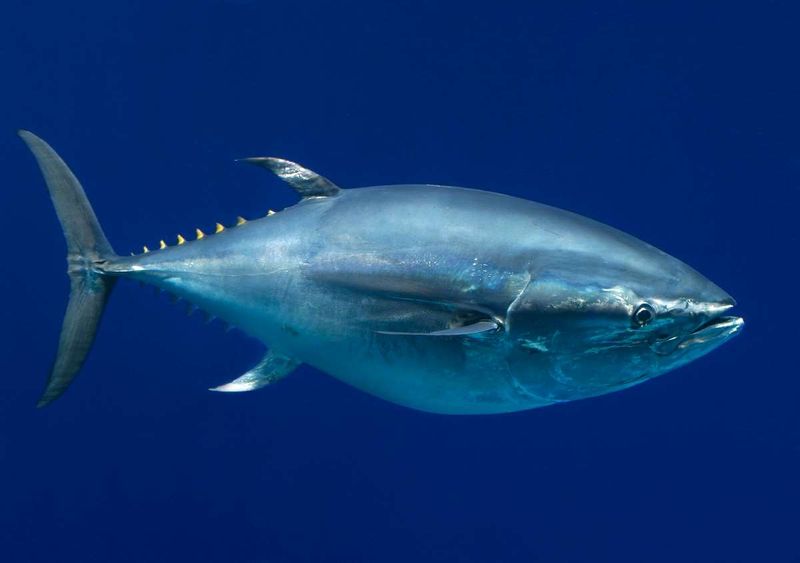
With speeds reaching up to 43 miles per hour, the Bluefin Tuna is a marvel of strength and agility. This oceanic predator, found in the Atlantic waters near Massachusetts, is known for its vibrant blue hue and muscular frame. It’s a prized catch for both commercial and sport fishermen.
Despite its popularity, overfishing has led to a decline in Bluefin Tuna populations. Conservation measures have become crucial to ensure the survival of this species. Its impressive stamina and beauty make it a true icon of the sea, admired and respected worldwide.
Alligator Gar
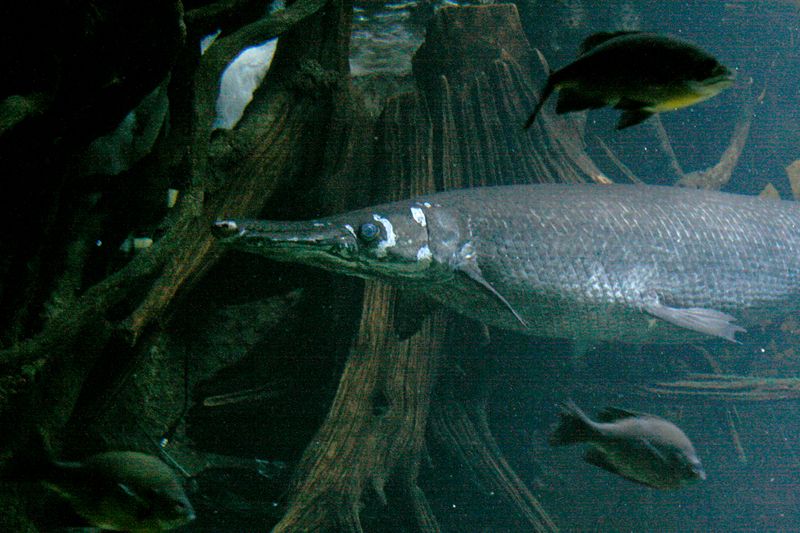
The Alligator Gar, with its toothy grin and elongated body, is often mistaken for a creature from a bygone era. Found primarily in the Mississippi River, this fish can grow to over 10 feet, boasting an ancient lineage and a fearsome look.
Its scales are as tough as armor, protecting it from predators and allowing it to thrive in various aquatic environments. This formidable fish is not just a predator; it plays a vital role in maintaining the balance of its ecosystem. Its resilience is a testament to its evolutionary success.
Chinook Salmon
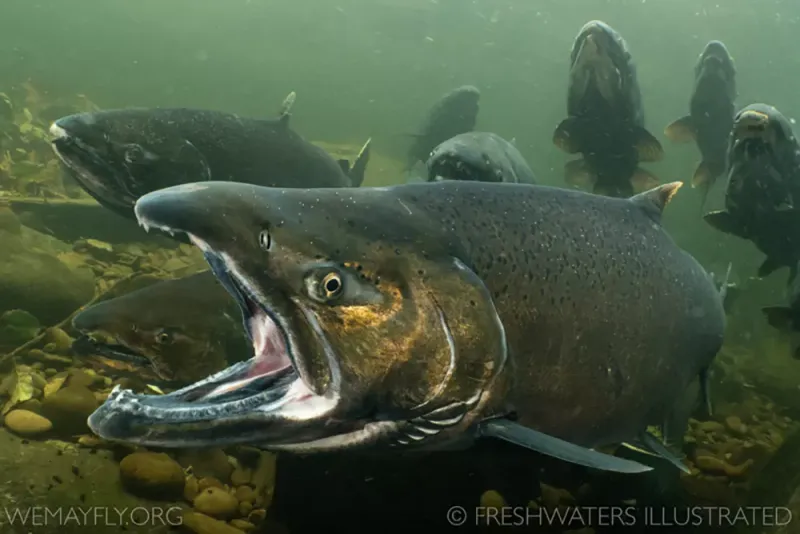
The journey of the Chinook Salmon is nothing short of epic. Enduring countless obstacles, it migrates hundreds of miles from the Pacific Ocean to its spawning grounds in the Pacific Northwest. Its shimmering scales and robust body make it a sight to behold.
This fish is a cultural icon, celebrated by indigenous tribes and anglers alike. However, its populations are threatened by habitat destruction and climate change. Efforts to restore and preserve their environments are crucial for their survival. The Chinook Salmon’s perseverance mirrors the challenges faced by many of nature’s wonders.
Atlantic Tarpon
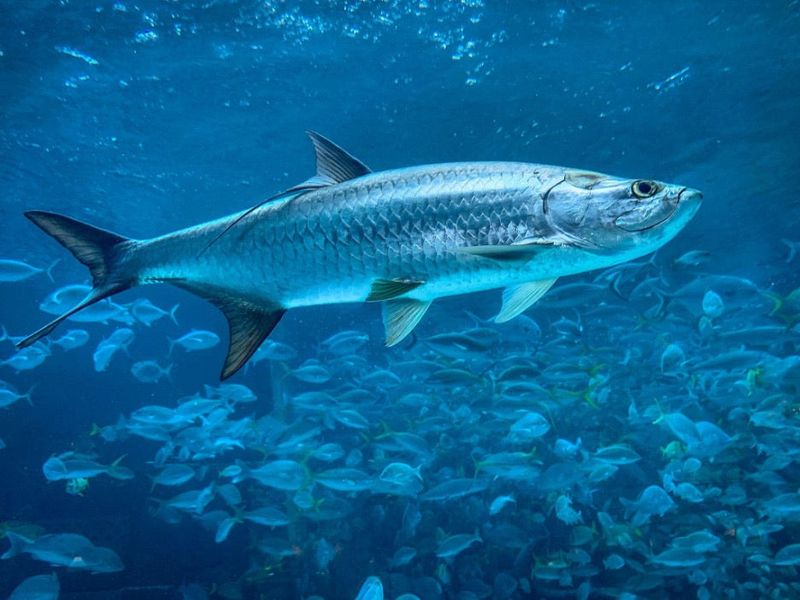
Known as the “Silver King,” the Atlantic Tarpon captivates with its acrobatic leaps and majestic presence. Found in the warm waters of Florida, this fish can grow over 8 feet long and weigh more than 280 pounds. Its shiny scales reflect the sunlight, creating a dazzling display.
Anglers are drawn to its spirited fight, making it a popular sport fish. Conservation efforts have become integral, as habitat degradation threatens its future. The Atlantic Tarpon’s allure lies not only in its size but also in the challenge it presents to those who seek its capture.
Muskellunge
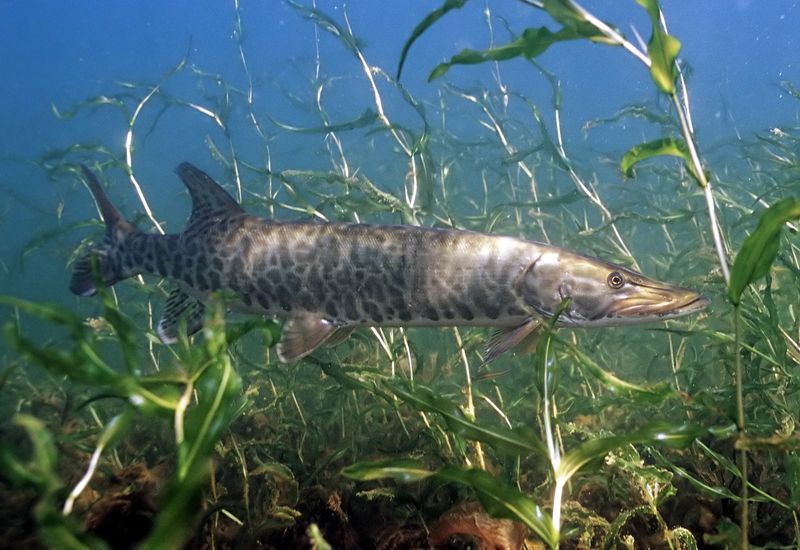
The Muskellunge, or “Muskie,” is a master of stealth in the freshwater lakes of Wisconsin. With a streamlined body and razor-sharp teeth, it is an apex predator, capable of sudden bursts of speed to catch its prey.
Growing over 50 inches, the Muskellunge is a trophy fish for many anglers. Its elusive nature and formidable presence make it a sought-after catch. Conservation initiatives help maintain its population, allowing the Muskie to continue ruling its watery domain. Its mystique captures the imagination, embodying the wild spirit of America’s lakes.
Lake Trout

Deep within the Great Lakes, the Lake Trout reigns supreme. Renowned for its mottled appearance and impressive size, it thrives in the cold, deep waters, reaching weights of over 100 pounds. Its presence is a testament to the ecological richness of its habitat.
Once facing population decline due to invasive species, the Lake Trout has rebounded thanks to conservation efforts. Anglers cherish the opportunity to pursue this elusive fish, drawn to its strength and beauty. It stands as a symbol of resilience and the revitalization of its natural environment.
Red Drum
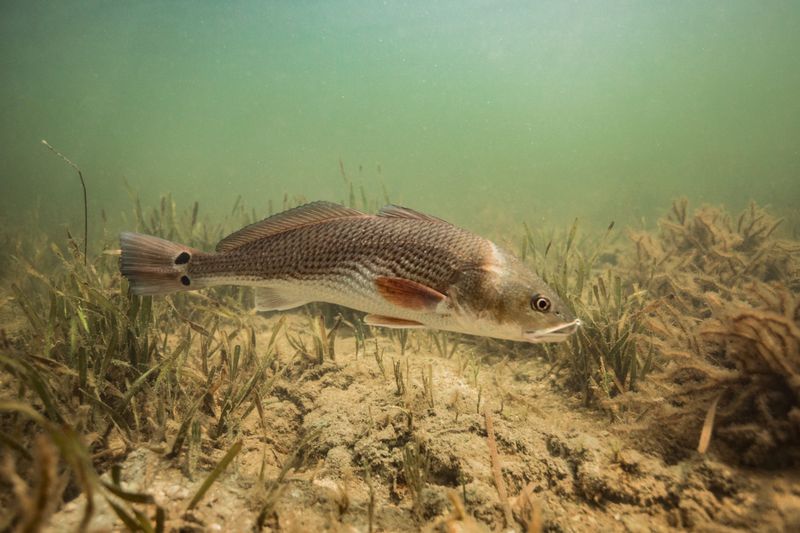
The Red Drum, with its distinctive black spot near the tail, is a beloved resident of the Gulf of Mexico’s shallow coastal waters. This robust fish can grow up to 90 pounds, offering a thrilling challenge for anglers.
Known for its copper-bronze hue, the Red Drum is as striking as it is powerful. Conservation measures have ensured healthy populations, allowing it to continue thriving in its coastal habitat. Its endurance and allure make it a favorite among fishing communities, celebrated for both its fighting spirit and culinary appeal.
Vermilion Snapper
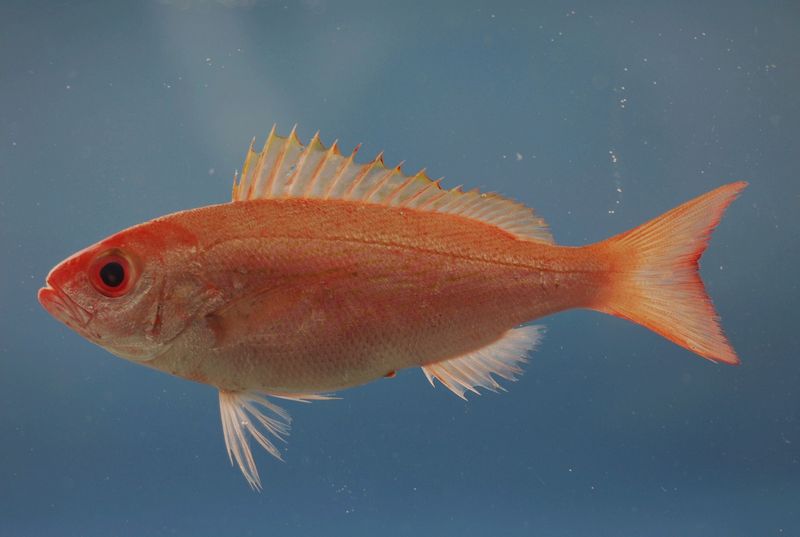
Beneath the waves of the Atlantic Ocean, the Vermilion Snapper offers a flash of color amidst the coral reefs. Its bright red scales and sleek, elongated body make it a visual delight. This fish, though smaller than some giants, is an important part of its ecosystem.
Anglers appreciate its spirited nature and the challenge it presents. Sustainable fishing practices have become essential to preserve its populations. The Vermilion Snapper’s beauty and tenacity make it a valued catch, highlighting the vibrant marine life supported by healthy ocean environments.
Swordfish

With its iconic elongated bill, the Swordfish is a master of the open ocean. This apex predator can reach lengths of up to 14 feet and speeds of 60 mph. Found in both the Atlantic and Pacific, its streamlined body is built for pursuit.
Despite its prowess, overfishing has threatened its numbers, prompting international conservation efforts. The Swordfish’s formidable presence inspires awe and respect, symbolizing the untamed power of the sea. Its legendary status among fishermen is well-earned, as it continues to challenge those daring enough to seek it.
Wahoo
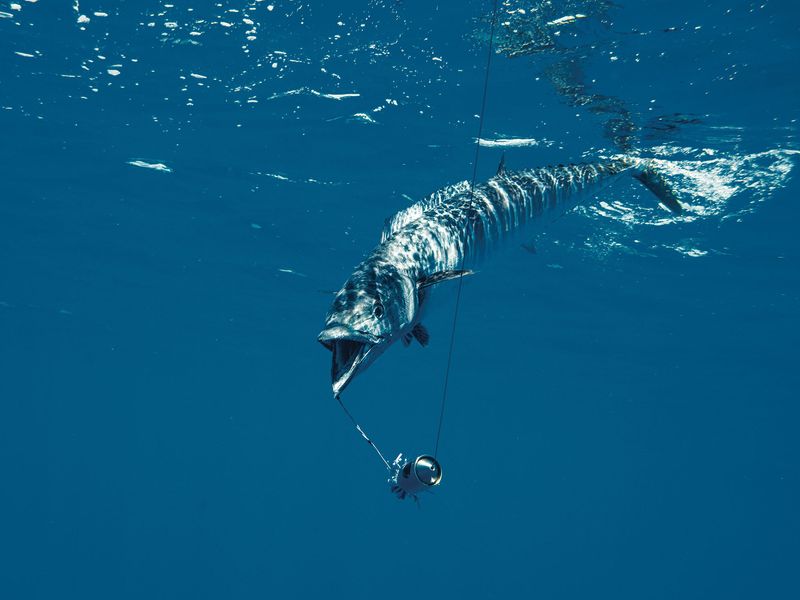
In the warm embrace of the Gulf Stream, the Wahoo lives up to its reputation as one of the fastest fish in the sea. With speeds over 60 mph, this torpedo-shaped predator is a marvel of marine engineering, renowned for its vibrant blue stripes.
Its lean, muscular body makes it a formidable opponent for sport fishermen. Conservation efforts have helped maintain its population, ensuring that the Wahoo remains a vital part of the marine ecosystem. Its exhilarating speed and striking appearance make it a prized catch for anglers seeking the ultimate challenge.
Lake Sturgeon
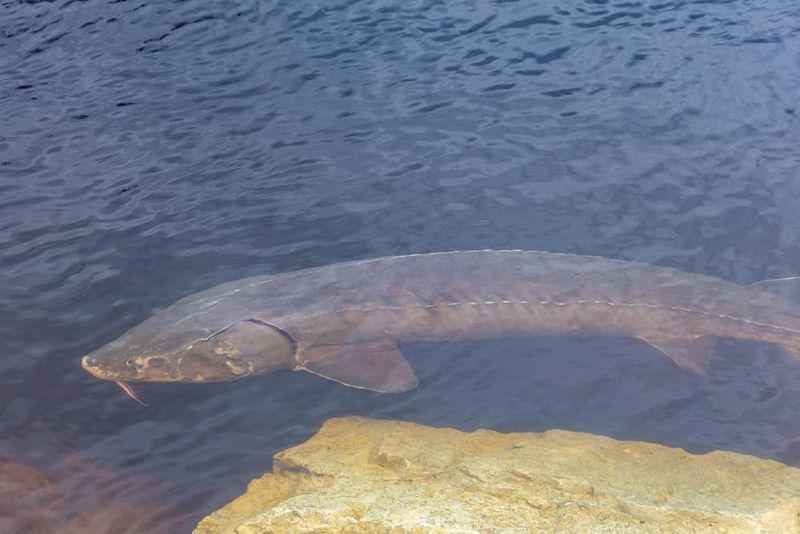
The Lake Sturgeon, with its armoured skin and whiskered snout, is a living relic from prehistoric times. Found in the waters of the Mississippi River, this ancient giant can grow to over 7 feet, embodying the mysteries of the past.
Its survival through millennia is a testament to its adaptability. However, like many giants, it faces threats from habitat disruption and pollution. Conservation efforts are crucial to its continuing legacy. The Lake Sturgeon’s enigmatic presence and historical significance make it a fascinating subject of study and admiration.

